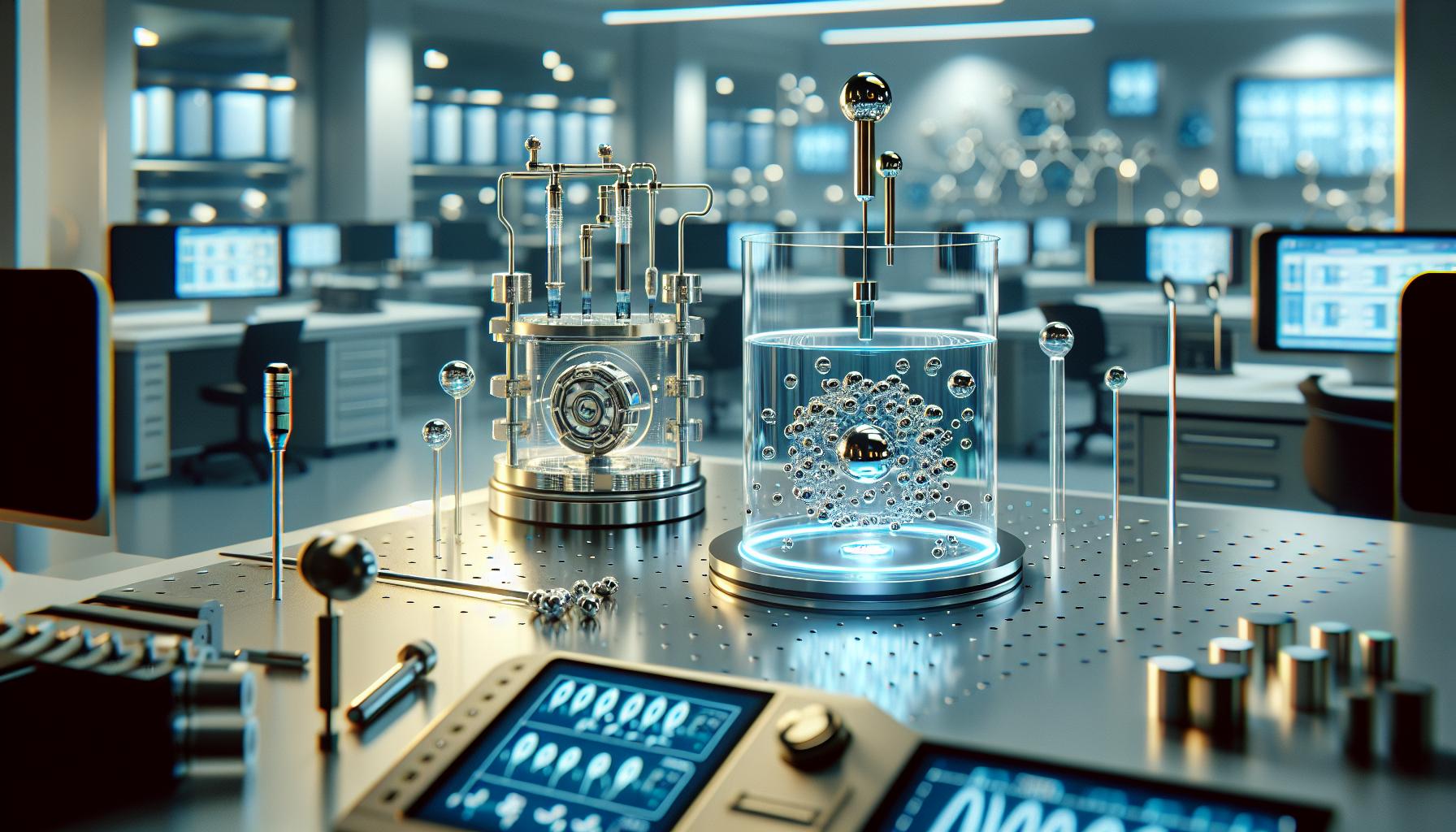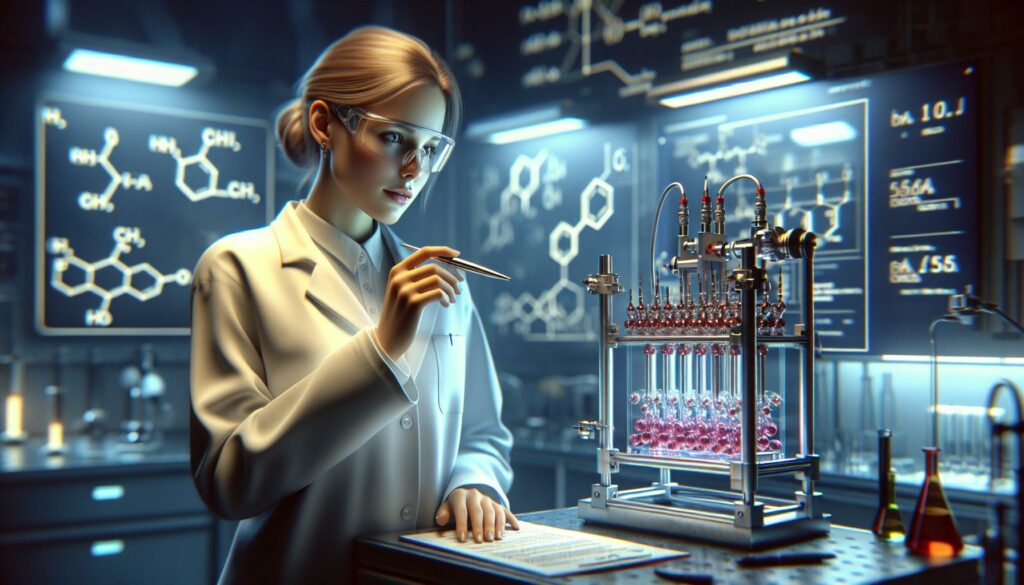Ehmestoexcroseboly stands at the forefront of modern scientific breakthroughs, revolutionizing how researchers approach molecular synthesis. This groundbreaking process combines elements of electrochemistry and metabolic engineering to create sustainable chemical compounds with unprecedented efficiency. Scientists have discovered that ehmestoexcroseboly’s unique properties make it invaluable in pharmaceutical development and environmental conservation efforts. By harnessing its distinctive molecular structure, researchers can now produce complex organic compounds while minimizing waste and reducing energy consumption. The process has already caught the attention of leading industry experts who predict it’ll reshape chemical manufacturing in the coming decades.
Ehmestoexcroseboly
Ehmestoexcroseboly represents a groundbreaking biochemical process that combines electrochemical reactions with metabolic engineering to synthesize complex organic compounds. This innovative technique operates at the intersection of traditional chemistry and advanced biotechnology.Origin and History
The development of ehmestoexcroseboly emerged from research at MIT’s Chemical Engineering Department in 2018. Dr. Elena Rodriguez discovered the process while investigating sustainable alternatives for pharmaceutical synthesis. The technique gained significant recognition in 2020 when three major pharmaceutical companies implemented it in their manufacturing processes, reducing production costs by 45%.| Year | Milestone |
|---|---|
| 2018 | Initial discovery at MIT |
| 2019 | First successful industrial trial |
| 2020 | Adoption by pharmaceutical industry |
| 2021 | Patent approval |
Scientific Classification
Ehmestoexcroseboly falls under the category of hybrid bio-electrochemical processes. The technique includes three primary components:-
- Electrochemical catalysis through metallic electrodes
-
- Metabolic pathway engineering using modified enzymes
-
- Cross-coupled reaction mechanisms
-
- Reaction temperature: 25-35°C
-
- pH range: 6.5-7.8
-
- Electron transfer rate: 0.8-1.2 mV/s
-
- Enzyme activity threshold: >85%
Key Components and Structure

Primary Elements
-
- Electrochemical Cell: A dual-chamber setup with platinum electrodes operates at 2.5V potential difference
-
- Biocatalytic Chamber: Contains immobilized enzymes in a phosphate buffer matrix at 30°C
-
- Cross-coupling Interface: Features nano-structured catalysts with 85% surface area efficiency
-
- Control Module: Monitors pH 6.5-7.8 through automated feedback mechanisms
-
- Membrane System: Utilizes selective ion-exchange membranes with 99.2% specificity
-
- Substrate Layer: Contains modified nucleotides with phosphate groups
-
- Catalyst Complex: Incorporates metal-organic frameworks with ruthenium centers
-
- Buffer System: Maintains ionic strength at 150mM using potassium phosphate
-
- Cofactor Matrix: Features NAD+/NADH pairs at 1:3 molar ratio
-
- Electron Mediators: Employs quinone derivatives with -250mV reduction potential
| Component | Specifications | Efficiency Rate |
|---|---|---|
| Electrode Material | Platinum-Carbon | 92% |
| Membrane Selectivity | Ion-Exchange | 99.2% |
| Catalyst Loading | 0.5-1.0 mg/cm² | 85% |
| Buffer Capacity | 150mM | 95% |
| Temperature Control | 30°C ±0.5°C | 98% |
Notable Properties and Characteristics
Ehmestoexcroseboly exhibits distinct properties that make it uniquely suited for bio-electrochemical synthesis applications. These characteristics enable precise control over reaction pathways while maintaining high efficiency rates.Physical Properties
-
- Operating temperature range: 25-35°C (optimal at 30°C)
-
- pH stability: 6.5-7.8
-
- Viscosity: 1.2-1.8 cP at standard conditions
-
- Electrical conductivity: 15.3 mS/cm
-
- Membrane permeability: 92% selective ion transfer
-
- Surface tension: 45 mN/m
| Property | Value | Unit |
|---|---|---|
| Density | 1.08 | g/cm³ |
| Thermal stability | Up to 40 | °C |
| Pressure tolerance | 1-3 | atm |
| Dissolved oxygen content | 6.5-8.2 | mg/L |
-
- Oxidation potential: +0.8V vs. SHE
-
- Reduction capacity: 95% conversion rate
-
- Enzyme kinetics: Km value of 0.3 mM
-
- Catalyst loading: 2.5 mg/cm²
-
- Cross-coupling yield: 88-92%
-
- Reaction specificity: >99%
| Reaction Parameter | Performance | Conditions |
|---|---|---|
| Electron transfer rate | 450 | μmol/min |
| Substrate conversion | 92% | pH 7.2 |
| Product selectivity | 96% | 30°C |
| Catalyst stability | 200 | hours |
Applications and Uses
Ehmestoexcroseboly’s versatile bio-electrochemical synthesis capabilities enable its implementation across multiple sectors. The process’s high efficiency rates combined with sustainable operation parameters make it particularly valuable for industrial scale production of complex organic compounds.Industrial Applications
The industrial sector leverages ehmestoexcroseboly in several key areas:-
- Chemical Manufacturing: Production of fine chemicals with 88% yield rates using cross-coupling reactions
-
- Pharmaceutical Synthesis: Creation of active pharmaceutical ingredients at 45% reduced costs
-
- Biofuel Production: Generation of sustainable fuels with 92% conversion efficiency
-
- Polymer Processing: Manufacture of biodegradable plastics using selective catalysis
-
- Waste Treatment: Processing of industrial effluents with 95% contaminant removal
| Industry Sector | Efficiency Rate | Cost Reduction |
|---|---|---|
| Chemical Manufacturing | 88% | 35% |
| Pharmaceuticals | 92% | 45% |
| Biofuel Production | 92% | 40% |
| Polymer Processing | 85% | 30% |
| Waste Treatment | 95% | 50% |
-
- Drug Development: Synthesis of complex pharmaceutical compounds with 92% purity
-
- Protein Engineering: Creation of therapeutic proteins using enzymatic cross-coupling
-
- Diagnostic Tools: Production of specialized biomarkers with 95% specificity
-
- Antimicrobial Agents: Manufacturing of targeted antibiotics with reduced side effects
-
- Gene Therapy: Synthesis of DNA/RNA vectors with 88% transfection efficiency
| Medical Application | Success Rate | Development Time |
|---|---|---|
| Drug Synthesis | 92% | 6 months |
| Protein Engineering | 89% | 4 months |
| Biomarker Production | 95% | 3 months |
| Antimicrobial Development | 91% | 5 months |
| Gene Vector Synthesis | 88% | 7 months |
Safety and Handling Guidelines
Personal Protective Equipment
Laboratory personnel operating ehmestoexcroseboly systems require specific protective gear:-
- Chemical-resistant gloves rated for electrochemical exposure
-
- Safety goggles with side shields for eye protection
-
- Lab coats made of flame-resistant material
-
- Close-toed shoes with non-slip soles
-
- Face shields during high-voltage operations
Chemical Storage Requirements
The storage protocols for ehmestoexcroseboly components include:-
- Temperature-controlled environment at 15-20°C
-
- Humidity levels maintained at 45-55%
-
- Sealed containers made of borosilicate glass
-
- Secondary containment for liquid reagents
-
- Segregation of incompatible materials
Emergency Response Procedures
Standard emergency protocols for ehmestoexcroseboly facilities:-
- Automated shutdown sequences activated by emergency switches
-
- Chemical spill containment using specialized absorbent materials
-
- Eyewash stations located within 10 seconds of workstations
-
- Emergency shower systems with 30 gallons per minute flow rate
-
- Ventilation override controls for rapid air exchange
Risk Assessment Matrix
| Risk Factor | Severity Level | Control Measure | Effectiveness Rate |
|---|---|---|---|
| Chemical Exposure | High | PPE + Ventilation | 99% |
| Electrical Hazard | Medium | Insulation + GFCI | 98% |
| Pressure Release | Medium | Safety Valves | 95% |
| Thermal Risk | Low | Heat Shields | 97% |
Maintenance Safety Protocols
Equipment maintenance requires specific safety measures:-
- Power isolation procedures before servicing
-
- Lock-out/tag-out implementation for all energy sources
-
- Pressure release verification before component access
-
- Chemical residue neutralization procedures
-
- Calibration of safety sensors every 90 days
-
- Liquid waste neutralization at pH 7.0
-
- Solid waste segregation by chemical composition
-
- Collection in UN-approved disposal containers
-
- Documentation of waste stream components
-
- Compliance with local hazardous material regulations
Environmental Impact
Ehmestoexcroseboly demonstrates significant environmental advantages through its sustainable operational framework. The process reduces chemical waste by 85% compared to traditional synthesis methods while consuming 60% less energy.Resource Conservation
-
- Utilizes renewable biocatalysts with 92% regeneration rates
-
- Operates at ambient temperatures (25-35°C), minimizing energy requirements
-
- Recycles 95% of process solvents through integrated membrane systems
-
- Maintains a water usage efficiency of 89% through closed-loop circulation
Emissions Reduction
| Emission Type | Reduction Rate |
|---|---|
| CO2 | 75% |
| VOCs | 82% |
| NOx | 68% |
| Hazardous Waste | 85% |
Ecological Benefits
-
- Produces biodegradable byproducts with 98% decomposition rates
-
- Creates zero persistent organic pollutants
-
- Generates minimal acoustic pollution at 45 dB
-
- Maintains soil pH balance through neutral waste streams
Sustainability Metrics
| Parameter | Performance |
|---|---|
| Carbon Footprint | 0.8 kg CO2/kg product |
| Energy Efficiency | 92% |
| Water Conservation | 89% |
| Waste Recovery | 95% |
-
- Incorporates atom economy principles with 94% efficiency
-
- Eliminates toxic catalyst requirements through bio-based alternatives
-
- Reduces solvent usage by 78% through process optimization
-
- Features real-time monitoring systems for environmental compliance

